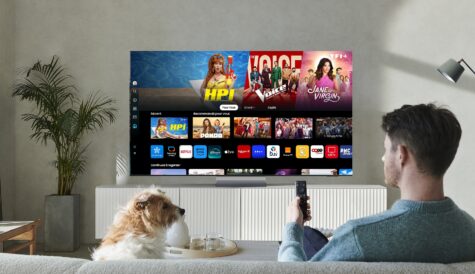Viacom to increasingly focus on mobile and apps, says digital chief
Viacom will focus more of its distribution efforts on mobile as younger consumers increasingly view content on smartphones and tablets, according to Philip O’Ferrall, SVP of digital and Viacom International Media Networks.
Speaking at the Apps World event in London this morning, O’Ferrall said Viacom is increasingly focusing on mobile as the ‘first screen’ for its target demographic. “Mobile first is becoming a key phrase for us,” said O’Ferrall. “Our focus for decades has been on linear TV. TV is definitely the primary distribution for us but at the heart of what we do is provide great content,” he said, adding that how that content is distributed is changing rapidly.
O’Ferrall said the move to mobile is the most significant shift Viacom has seen, with six in 10 adults now owning a smartphone and a half of all households owning a tablet. Sixty per cent of digital media time spent the US is on a smartphone or tablet and UK young adults spend an average of three and a half hours a day glued to these devices, he said.
“Our audiences are spending more time on the devices they have than they have in the day, so they are multitasking, and that’s a big shift in habits,” said O’Ferrall.
Social media now plays a large part in the lives of the Viacom core audience, said O’Ferrall. “Social media is at the heart of all of this,” he said. “Social media within mobile has become a huge shift and it’s now very much mobiel first,” he said. Sixty-two per cent of traffic to MTV sites now came via mobile devices he said.
To make money from social medial Viacom has tried to create engagement around its properties, getting fans to vote on their favourite entertainment stars.
“The second screen is now the first screen for young audiences,” said O’Ferrall. “That is the reality today.”
He said that connecting with young audiences has been above all about embracing this very recent and rapid move to mobile. “That shift in consumption has been a really big deal for us,” he said.
To deliver a compelling mobile experience, Viacom is turning to apps first and foremost. About 50% of engagement with entertainment brands is within apps, said O’Ferrall. He said Viacom saw apps as shop windows for its brands. “We need brand presence within the mobile or tablet device. The Holy Grail for us is to have Spongebob Squarepants within the device.”
O’Ferrall cited the example of MTV Trax, its music app. Once the app is in the device, MTV can have a two-way conversation with its audience, he said.
Around the MTV Europe Music Awards in Glasgow, MTV developed a specific app around the event with additional content including free material. There were 260,000 downloads in the run up to the awards, he said, which Viacom judged a success for a one off event.
Viacom has also seen a million downloads for its MTV news app, which provides “youth focused” news, while the Spongebob Diner Dash free game-based app had 18 million downloads.
Viacom’s Nick app meanwhile provides content from the Nickelodeaon channel and has seen 11.5 million downloads. This is available in the US, Latin America and the UK. “We have to service this app every single day for every country in which we are present, “ he said.
Another app, My Nick Jr, is Viacom’s first product for preschool kids that is “tethered” to TV viewing, enabling parents to decide what they allow kids to watch and how much viewing is permitted, said O’Ferrall.
Another key app, the Paramount app, provides additional content about the Paramount catalogue of movies. Other apps are designed to provide engagement, such as the MTV Match Making app, which provides ‘compatibility tests’ for users and their partners.
O’Ferrall said monetisation of the mobile experience is still at an early stage and is primarily from sponsorship from existing advertising partners.
O’Ferrall said it was difficult to create content just for mobile or for online that could then be extended to TV. About US$3.45 billion (€2.8 billion) of Viacom’s US$3.5 billion annual spend on content was still on traditional TV and film. Most people watched the same content on mobile and tablets as they watch on TV. “Just investing in short form mobile content is done at your peril. It’s not for us from our experience,” he said.
O’Ferrall said that apps developed for long-running brands were intended for the long term and would be maintained and would evolve with the brand. “We do put a lot of effort into short form original content but on the back of the long form linear brand,” he said.




